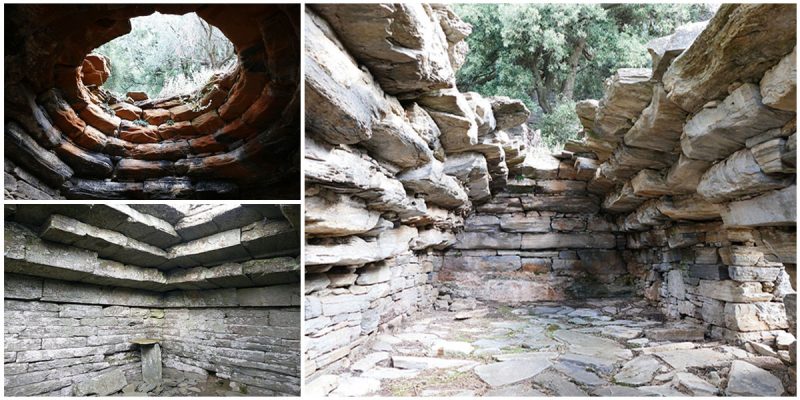The dragon houses (‘drakospita’ or ‘dragà’) are local names assigned to 23 ancient megalithic ruined structures hidden in the mountains of the island of Euboea, Greece, mostly in the areas of Mount Ochi and of Styra.
The fascinating fact about these mysterious structures is their construction of relatively thin stones, mostly square or rectangular, placed on top of one another without any bond or other material.
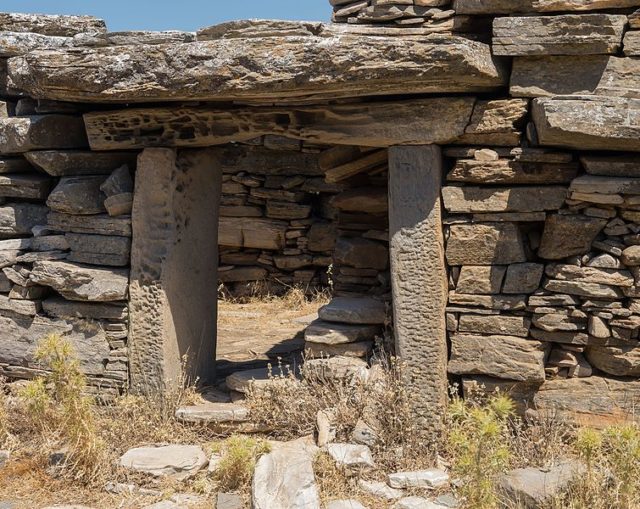
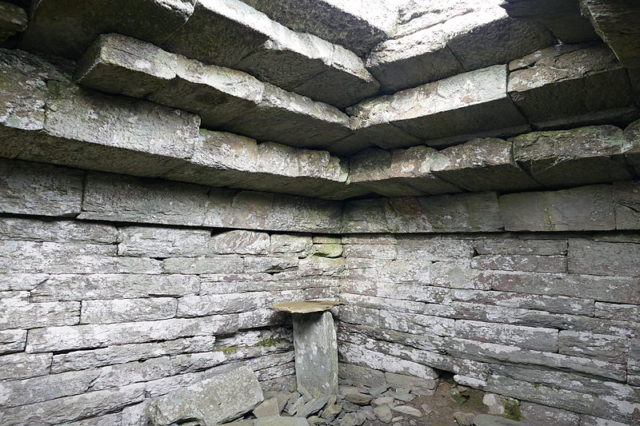
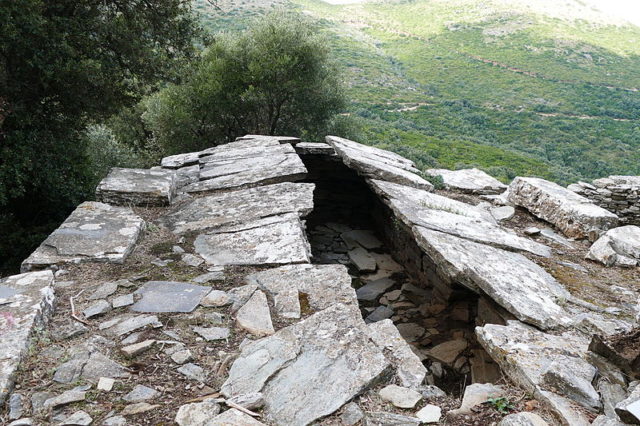
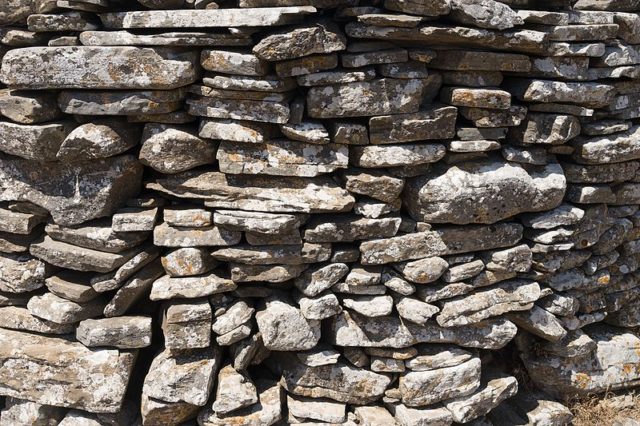
Resting deep in the mountains in the southeastern part of the island of Euboea, the dragon house on the summit of Mount Ochi is the most famous and well preserved of all megalithic constructions scattered throughout the island, discovered by the British geologist, traveler, and writer, John Hawkins in the 18th century.
During the excavations, led by Professor Nikolaos K. Moutsopoulos in 1959, numerous black-glazed cup insulators and vases have been found under the floor of the building, dating from the Archaic to the Roman times.
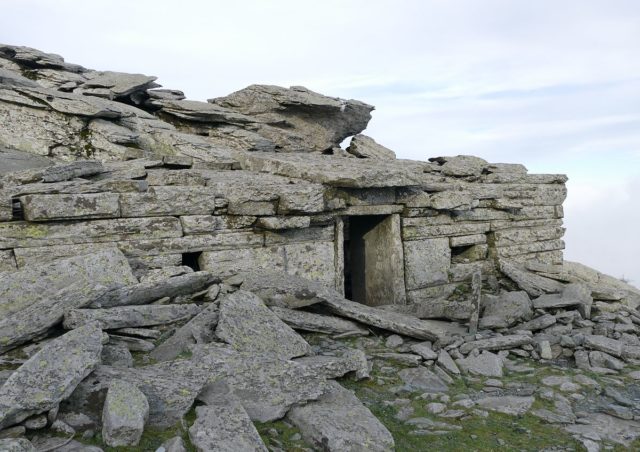
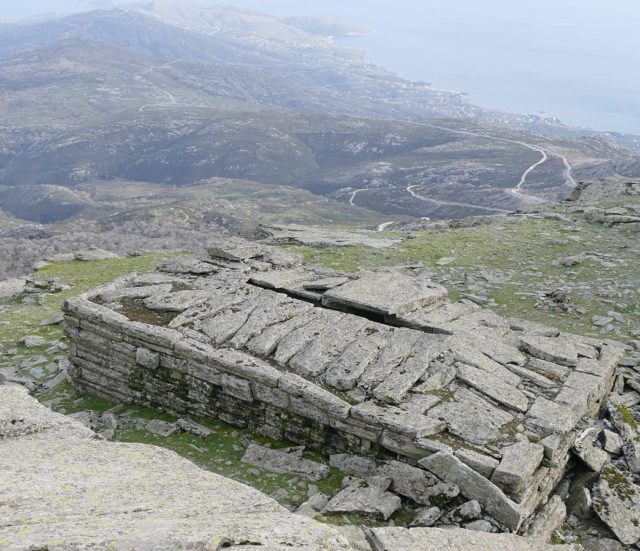
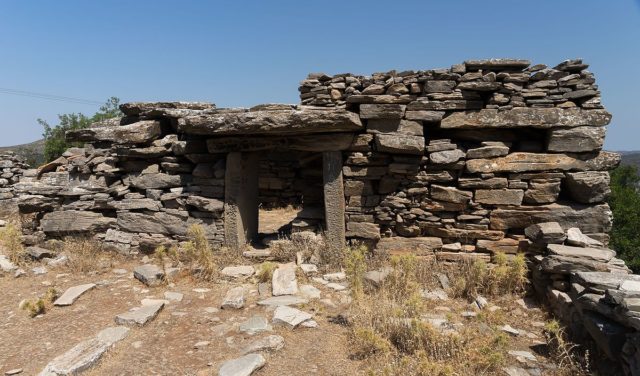
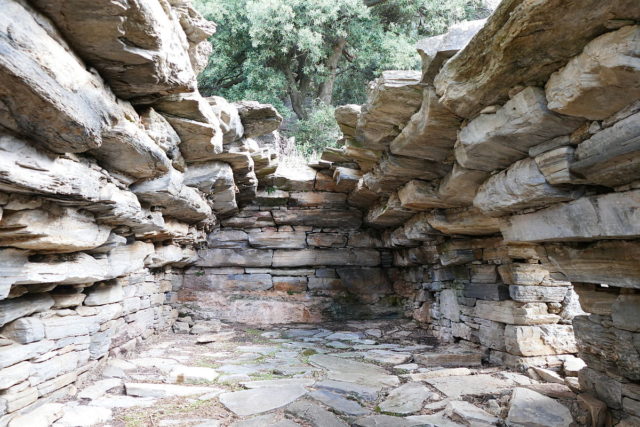
It has been considered that the building was an ancient temple dedicated to the worship of Jupiter and Hera, and this stands as the most popular explanation among scholars.
Over the years, there have been many other theories on the construction, dating, and purpose of the structures.
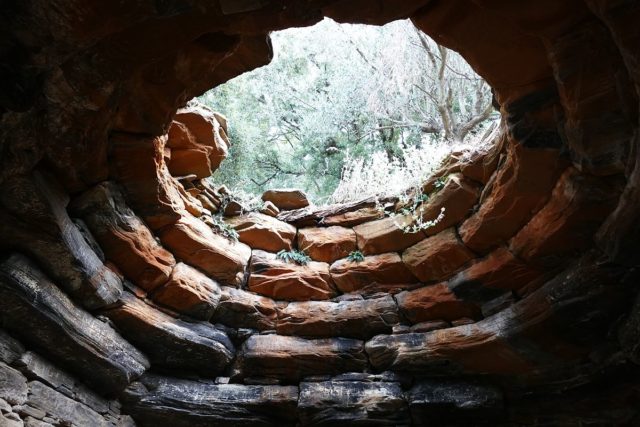
Some have claimed that they were guard posts or protective structures associated with the fortification works of the Hellenistic period, others believe that they might have been shelters for the Roman guards or even warehouses built by slaves who worked in stone quarries in the Late Hellenistic and Early Roman period.
Read another story from us: The home of the dragon- the fascinating history of the Ljubljana Castle
Other notable buildings are located in Kapsala and at Laka Palli, but these sites have not been fully explored, so the date, the function, and the origins of the structures remain open for further examination.
